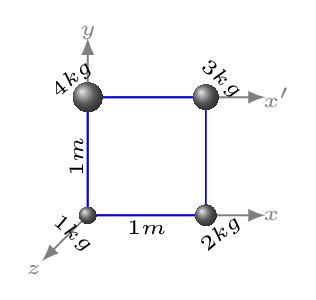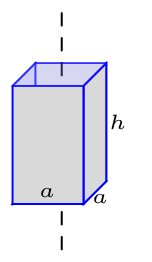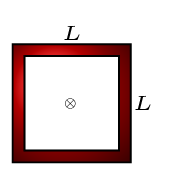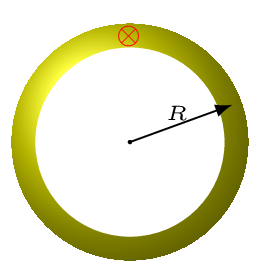Example 7.2.1.
Find the moment of inertia of the following mass distribution for the following axes,
- x,
- x’,
- y,
- z (out of the paper through the (x,y) origin).
Solution.

Given:
\begin{equation*}
m_{1} = 1 \,kg, \quad m_{2} = 2 \,kg, \quad m_{3} = 3 \,kg,\quad m_{4} = 4 \,kg
\end{equation*}
- \begin{equation*} r_{1} = 0, \quad r_{2} = 0 \,m, \quad r_{3} = 1 \,m,\quad r_{4} = 1 \,m \end{equation*}\begin{equation*} \therefore I_{x} = \sum\limits_{1}^{4} m_{i} r_{i}^{2} = 0+0+3\cdot 1^{2}+4\cdot 1^{2} = 7\, kg m^{2} \end{equation*}
- \begin{equation*} r_{1} = 1 \,m,\quad r_{2} = 1 \,m, \quad r_{3} = 0, \quad r_{4} = 0 \end{equation*}\begin{equation*} \therefore I_{x'} = \sum\limits_{1}^{4} m_{i} r_{i}^{2} = 1+2+0+0=3\, kg m^{2} \end{equation*}
- \begin{equation*} r_{1} = 0,\quad r_{2} = 1 \,m,\quad r_{3} = 1 \,m,\quad r_{4} = 0 \,m, \end{equation*}\begin{equation*} \therefore \quad I_{y} = \sum\limits_{1}^{4} m_{i} r_{i}^{2} = 0+2+3+0=5\, kg m^{2} \end{equation*}
- \begin{equation*} r_{1} = 0, \quad r_{2} = 1 \,m,\quad r_{3} = \sqrt{2}\, m,\quad r_{4} = 1\, m, \end{equation*}\begin{equation*} I_{z} = \sum m r^{2} = 12 \, kg m^{2} \end{equation*}



